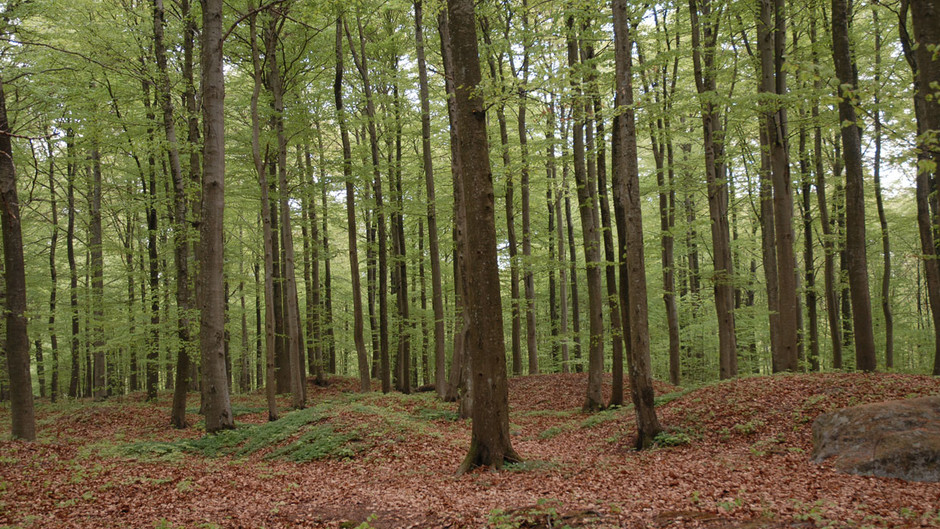Bøkeskogen


I Bøkeskogen finnes en av de største samlingene av gravhauger i Vestfold. Det er registrert 83 hauger, de fleste samlet i to adskilte felt.
Foto: Ingunn Baarnes

Bøkeskogen kan vi se hvordan isbreer har satt spor etter seg. Det har vært mange istider de siste 2,6 millionene år, men det er den siste istiden vi ser mest spor etter.
Foto: Svalbard, Mona Henriksen

Bøk
I Bøkeskogen kan man se blokker og grus i grunnen og jordsmonnet er iblandet mye sand. Jorda er lettdrenert og middels næringsrik, og sammen med et mildt og fuktig kystklima gir dette optimale forhold for bøka, Fagus sylvatica. Treslaget, som er ungt i norsk vegetasjonshistorie, etablerte seg trolig i Larvik omkring 700 e. Kr. Bøken ble høyst sannsynlig innført med vikinger - fra Danmark. Bøkeskogen i Larvik er en av landets største bøkeskoger og er blant de nordligste i verden.

Bøkeskogens undervegetasjon
På grunn av store, tette trekroner slipper lite lys ned til bakken, og løvet fra bøk råtner seint og bidrar til forsuring av jordsmonnet. Bunnvegetasjonen er derfor sparsom, men enkelte planter utnytter vårsola eller skyggen fra trekronene. I tillegg gir skogen livsmiljøer for sopp, lav og ulike insekter, som igjen er med på å frigjøre plantenæringsstoffer til skogen.

Bøkeskogen er en oase for fugler, med et yrende fugleliv gjennom hekkesesongen. Her en kjernebiter
Foto: Jan Åge Pedersen
The forest ”Bøkeskogen” in Larvik is one of the most northerly occurrences of beeches in the world.
The forest was founded as a landscape protection area in 1980 to preserve one of Norways classic beech forests. It is a popular hiking area with paths throughout and marked trails from 2.6 to 10 km in length. The “Bøkeskogen” and the municipality of Larvik became included in the Gea Norvegica Geopark in 2006.
Geology
In the “Bøkeskogen” we find remainders of the Ice aged Rå-moraine. The front of the large glacier during the Younger Dryas colder period about 12.800 – 11.500 years ago, laid directly in the area of todays “bøkeskogen”. Thus, we find sediments at the top of the Rå-moraine here, which had been deposited during the melting of the ice and left as a ridge behind the retreating ice. This extensive Rå-moraine stretches around the whole of Scandinavia.
History
The largest collection of grave-mounds in Vestfold are found in the ”Bøkeskogen”. 83 mounds are recorded and they lay in two fields. Different weapons, jewellery and various tools have been found in the burial mounds. On the basis of the recorded finds, the mounds are dated to Early Viking times (800 – 900 a.D.). The people who lived here during Viking times had been farmers, fishers, hunters and also conducted trade.